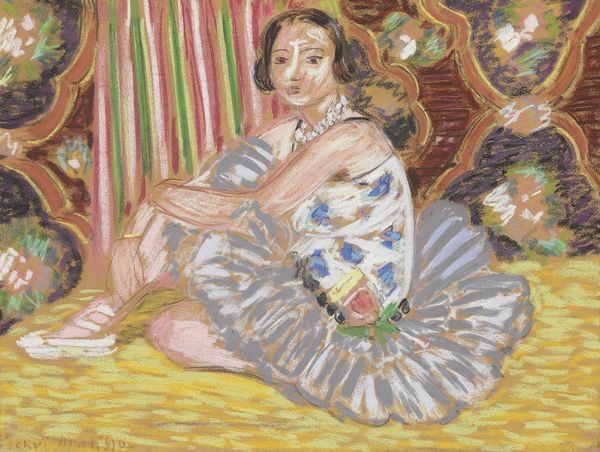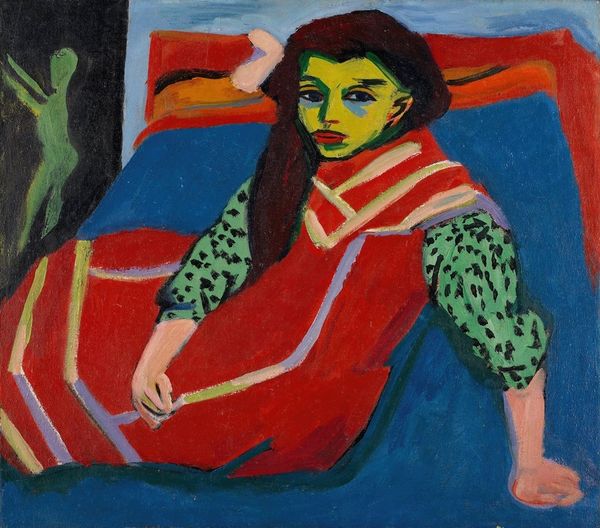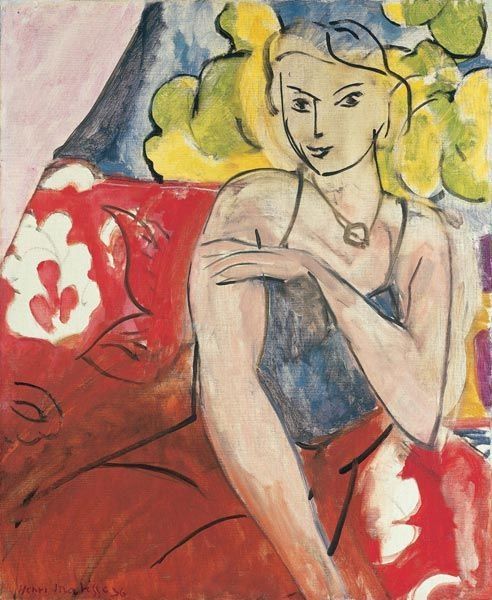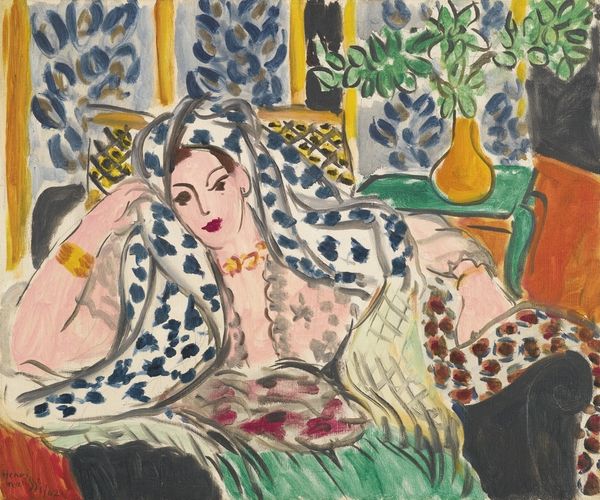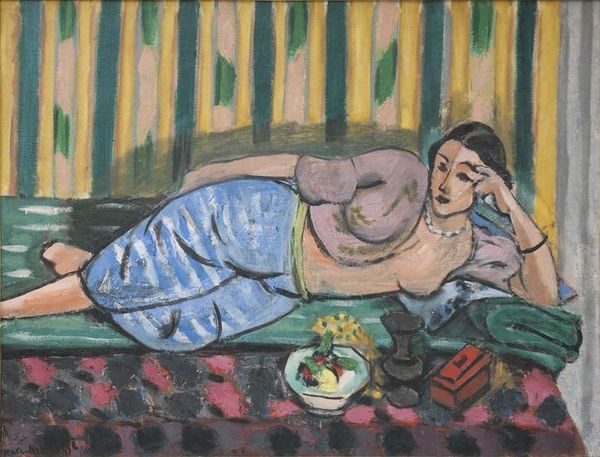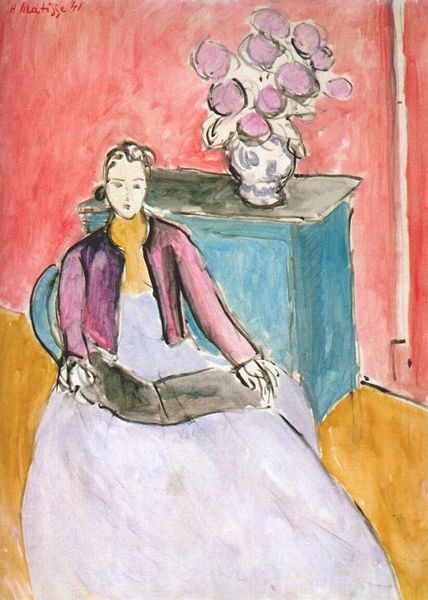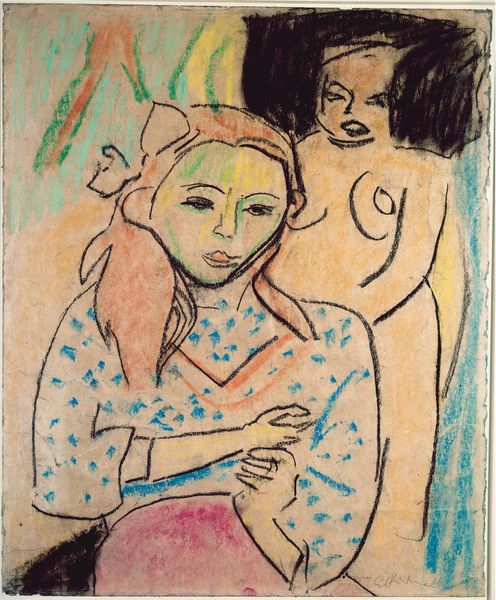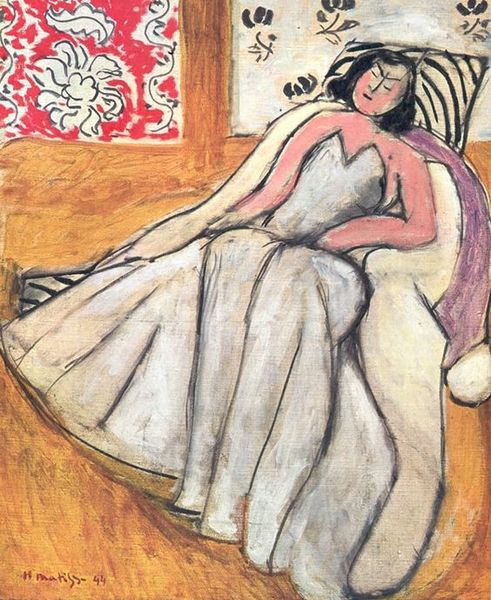
Dimensions: 43 x 56 cm
Copyright: Henri Matisse,Fair Use
Editor: Henri Matisse’s "Young Girl In A Persian Dress," painted in 1942, shows a figure in vibrant oil paint. I’m struck by how the flat planes of color create a sense of depth. How do you see Matisse engaging with materiality and production in this work? Curator: The key here is to consider the circumstances under which Matisse made this piece. During World War II, access to materials would have been limited. Looking closely, do you see how he economizes with paint? The thin washes and visible brushstrokes aren't just stylistic choices; they're indicative of resourcefulness. Editor: So the 'naive art' style might have been partly a result of necessity? Curator: Precisely. The material constraints shape the form. Also, consider the "Persian dress." It's not just exoticism. It connects to Matisse’s broader engagement with textiles and craft. He collected fabrics and integrated them into his compositions. Think about the labor involved in producing those textiles versus the relatively quick process of painting. What's Matisse suggesting about the value we place on different forms of artistic labor? Editor: That's fascinating! I hadn't considered the textile production element as a commentary on labor. So the perceived simplicity of the painting belies a more complex relationship with material culture. Curator: Exactly. And it challenges that traditional art-historical focus on individual genius, shifting the attention to those hidden processes of making and sourcing during that time. Editor: That changes my whole understanding of the work! I'll definitely look at Matisse with a different perspective now. Curator: And hopefully appreciate that “naive” is far from unsophisticated.
Comments
No comments
Be the first to comment and join the conversation on the ultimate creative platform.
